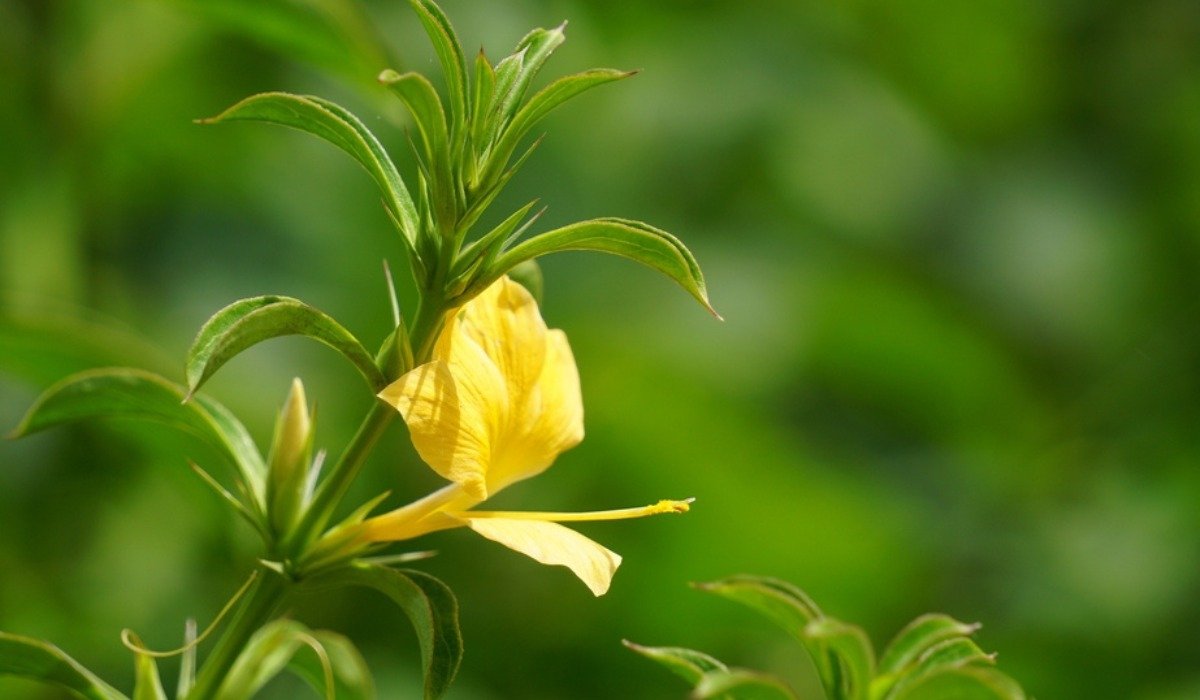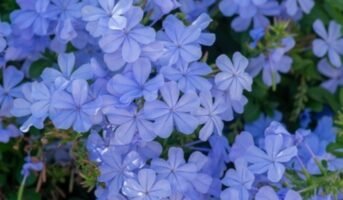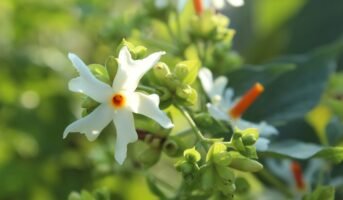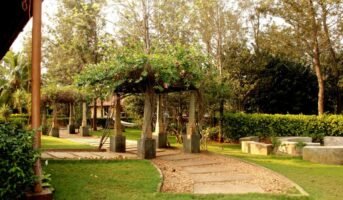A shrub of the Acanthaceae family, Barleria prionitis is indigenous to China, the Indian Subcontinent, the Arabian Peninsula, island and mainland Southeast Asia, and northern Africa.
Barleria prionitis is commonly known as the porcupine flower and is an ornamental shrub that has naturalised populations all over the world. It is widely used as a component of folk remedies in addition to being a decorative and a hedge.

Source: Pinterest
Barleria prionitis: Facts
| Common Name | Porcupine flower |
| Growth form | Shrub |
| Height | Upto 1.5 m |
| Family | Acanthaceae |
| Native | Southeast Asia |
| Soil pH | 5.6 – 7.5 |
| Sun | Full sun |
Barleria prionitis: How to grow?
Barleria prionitis thrives in both full sun and partial shade. It may grow in a variety of soils and needs well-drained soil. Plants will benefit greatly from the addition of a lot of compost to the soil.
You can plant this shrublet in banks and mixed borders. After the shrub has flowered, regular pruning is required for orderly and compact development. Trim the shoots in the spring and the first part of the summer to promote more blossoms.
It is simple to grow Barleria prionitis from seeds, cuttings, and layering. Before the seeds are disseminated, when the seed capsules turn brown, the seeds must be harvested. In seed trays filled with a well-drained medium, the flat seeds are sowed. With sifted dirt or sand, cover the seeds. Trays must be kept in a shaded place.

Source: Wikipedia
Barleria prionitis: Maintenance
Fertiliser
Feed your plants every two weeks using a liquid fertiliser that is balanced or a mixture with high phosphorus content for flowering plants. A plant that receives insufficient nutrients becomes despondent. Fertilising occurs less frequently than once a month throughout the winter.
Water
It needs watering quite sparingly, and the soil needs to dry out slightly in between watering. As the substrate dries up in the winter, watering should be infrequent.
Light
Barleria bright, diffused light. Strong sunlight causes the leaves to become pale, and poor illumination causes the plant to blossom slowly, the shoots to extend, and the leaves to become shallow.
Barleria prionitis: Medicinal Uses
Porcupine flower has a wide range of therapeutic purposes, including the treatment of fever, respiratory conditions, toothaches, joint pains, and a number of other maladies. Toothaches and bleeding gums are treated with a mouthwash produced from root tissue.
In traditional Indian medicine, the entire plant, including the leaves and roots, are used for a number of purposes. For instance, the leaves are applied topically to ease toothache and joint pain and improve wound healing. Extracts from the plant are used in herbal cosmetics and hair products to promote healthy skin and scalp because of their antibacterial characteristics.
FAQs
What are the insect problems with Barleria prionitis?
Whiteflies, scutellum, and spider mites are the most frequent pests that attack Barleria prionitis. However, flower producers have noted that even when the plants around it are impacted by insects, the plant itself is unaffected.
Is Barleria prionitis toxic?
Barleria prionitis has no known toxic effects.
Housing News Desk is the news desk of leading online real estate portal, Housing.com. Housing News Desk focuses on a variety of topics such as real estate laws, taxes, current news, property trends, home loans, rentals, décor, green homes, home improvement, etc. The main objective of the news desk, is to cover the real estate sector from the perspective of providing information that is useful to the end-user.
Facebook: https://www.facebook.com/housing.com/
Twitter: https://twitter.com/Housing
Email: [email protected]











